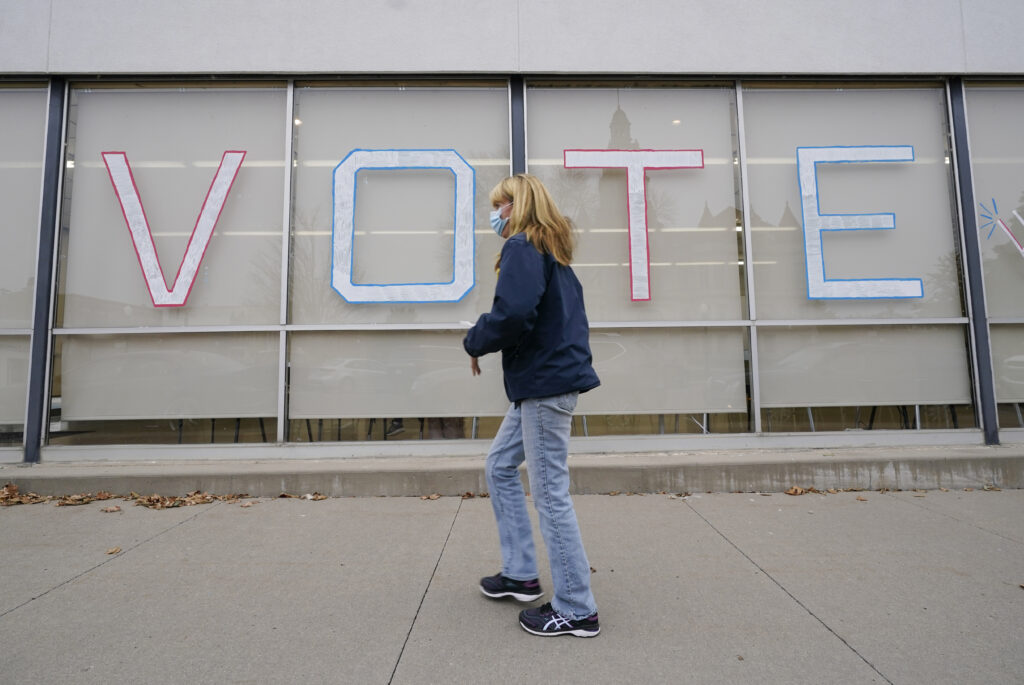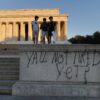Introduction
One year ago, the Center for Public Integrity turned the focus of its investigative reporting toward a global pandemic. Our newsroom’s focus on inequality, government transparency and collaboration with local news organizations has been crucial in telling the story of the disparate impact COVID-19 has had on Americans’ health and economic well-being.
Public Integrity’s earliest reporting on the pandemic exposed a federal government ill-prepared to deal with a deadly viral outbreak at this scale, state policies that left disabled people behind and a racist backlash against Asian Americans.
After breaking news that the White House was keeping state-by-state data and public health recommendations about the outbreak secret, Public Integrity reporter Liz Essley Whyte obtained the reports and published them. And then kept on obtaining and publishing them weekly as COVID-19 cases spiked and some governors ignored the recommendations and refused to share the data.
At the same time, Public Integrity journalists investigated an inadequate and discriminatory government response to the economic fallout from COVID-19, as well as the implications for voting access in an election year.
Here’s a look back at key pandemic stories we’ve published over the past year:
Economic and worker-safety fallout
These companies took $1.8 billion in federal aid to save jobs. They laid off 90,000 workers anyway. Read the story here.
The pandemic gave the Trump administration an opening to roll back health and safety regulations that it had long sought to weaken. Read the story.
As on-the-job deaths rose, the Trump administration reduced workplace safety inspections. Then COVID-19 hit. Inspections dropped even further. Read the story here.
Hundreds of U.S. businesses, including huge franchises, have been cited for illegally denying paid sick leave to workers during the pandemic. Read the story here.
Early in the pandemic, as healthcare workers pleaded for help, the federal government refused to make hospitals create a plan to protect their employees from coronavirus exposure. And the hospital industry’s trade group successfully lobbied to block other requirements. Read the story.
A Las Vegas telemarketer whose former companies were investigated by the Federal Trade Commission for possible “unfair or deceptive acts” has received taxpayer-funded loans meant to support small businesses struggling financially because of the COVID-19 pandemic. Read the story.
Black and brown Americans — the very people who are more likely to succumb to coronavirus or lose their jobs because of it — are disproportionately on the brink of also losing their homes, according to a Center for Public Integrity analysis of more than 8,000 eviction filings. Read the story.
For millions of Americans who are collectively billions of dollars behind in rent payments to their landlords, eviction bans are only a temporary fix for an impending economic calamity, one poised to widen the country’s racial wealth gap. Read the story.
The Paycheck Protection Program was supposed to prioritize low-income areas for help during the pandemic. It didn’t. Read the story.
“I was like, well, I guess maybe PPP was just not for us. Maybe we just don’t qualify. Maybe we’re too small.” In episode 5 of our podcast, “The Heist,” we looked at the federal program intended to help small businesses and their employees survive the pandemic — and how it was far quicker to help larger firms. Read the story and listen to the podcast here.
Guest farmworkers with visas died of COVID-19 in obscurity last year while Trump planned wage freezes, all at a time when these workers were providing essential work to the U.S. food supply chain. Read the story.
The health response in the year of COVID
When many were saying the coronavirus would be the great equalizer, Public Integrity was one of the first news outlets to use available data to examine the possibility that COVID-19 could hit minorities and low-income workers hardest. Read the story.
As the nation scrambled for ventilators in March, Public Integrity was first to report the exact number in the federal government’s stockpile. Many worried it wouldn’t be enough. Read the story.
Scientists warned that CDC estimates of COVID-19’s severity were optimistic. The agency’s model in early April predicted that roughly 300,000 people would die from the virus if the nation took no precautions. In May it predicted 500,000. We’ve now witnessed that half-a-million death toll even with social distancing and other measures. The coronavirus was deadlier than the federal government predicted. Read the April story. Read the May story.
Early in the pandemic, many states had medical rationing policies that would have sent people with disabilities to the back of the line for ventilators. Read the story.
After we published a story on these rationing policies, a U.S. senator introduced a bill to try to ensure people with disabilities got equal ventilator access. Read the story.
As the nation tried to prepare for overwhelmed hospitals, the real chokepoint became clear: too few health workers, including critical care nurses and respiratory therapists. There’s a federal system for signing up medical volunteers, but it’s neglected. Read the story.
As Georgia re-opened its economy in May, its intensive-care beds were largely full. Federal documents warned of limited capacity to handle a new COVID-19 surge. Read the story.
Air pollution exposure is a likely risk factor in a pandemic. But the U.S. Environmental Protection Agency kept working to roll back protections in 2020. Read the story.

Repeated climate disasters are worsening mental health. For people still recovering from recent hurricanes, wildfires and floods, COVID-19 is yet another blow. But the federal program to provide emotional support reaches few who need it. Read the story.
One New Jersey facility exemplified the chaos and confusion amid a COVID-19 outbreak. Nursing home workers there felt like ‘lambs led to slaughter.’ Read the story.
The Center for Public Integrity in July broke the news that the White House was secretly sending out state-by-state reports recommending that states return to stringent control measures. Documents the Center published showed that 18 states were in the “red zone” for new coronavirus cases. Read the story.
The White House refused to publish the weekly state reports exposed by Public Integrity, and got blowback for its secrecy. Read the story.
Public Integrity also obtained audio showing that the White House was doling out pandemic warnings in private, urging 11 cities to take ‘aggressive’ actions against coronavirus. Read the story.
We can’t do this work without your support.
Many local officials were left in the dark by the Trump administration’s secret, fragmented and contradictory pandemic advice. Read the story.
Public Integrity had the first detailed look at the shadowy data system guiding the federal pandemic response. Read the story.
The messages from the White House continued to conflict with each other. Trump planned a rally in Wisconsin despite his own White House Coronavirus Task Force, in a secret report, saying that Wisconsin residents should avoid crowds to prevent deaths. Read the story.

In December, the White House Coronavirus Task Force warned: ‘We are in a very dangerous place.’ Public Integrity continued to publish these secret warnings and made them available to local newsrooms across the country. Read the story.
That month the federal government finally released the data behind the secret state reports. It showed that most American cities qualified as “sustained hotspots” for the coronavirus. Read the story.
South Dakota’s Gov. Kristi Noem never issued a mask mandate and took a relaxed approach to the pandemic. By December, her state had lost roughly one in 10 of its nursing home residents to COVID-19. Read the story.
Some patients who survive COVID-19 are suffering from long-term health consequences. Public Integrity partnered with FlintBeat to examine what that would mean for communities that were already the most vulnerable to health and financial woes. Read the story.
Pandemic-fueled hate

Federal agencies are doing little about the rise in anti-Asian hate. That’s a stark contrast to actions taken during the SARS outbreak in 2003 and after the 9/11 terrorist attacks. Read the story here.
More than 30 percent of Americans have witnessed someone blaming Asian people for the coronavirus pandemic, according to a survey conducted for the Center for Public Integrity. Read the story here.
More than a quarter of Congress called on the Trump administration’s attorney general to publicly condemn the wave of anti-Asian bias related to the coronavirus pandemic. Read the story here.
Voter access
COVID-19 has disproportionately hit Native Americans, adding to a long list of obstacles to voting in many tribal communities. Some traditional turnout efforts, such as carpooling or offering bus rides to the polls, weren’t possible in 2020 because of the pandemic, prompting advocates to find new ways to get out the Native vote. Read the story.
Some of the sharpest reductions in polling places — and longest lines — during the 2020 primary came in cities that are home to many voters of color. Columbia, South Carolina, is a window into that pandemic-fueled problem. Read the story.

Voting-location closures and consolidations rippled across Iowa due to the coronavirus pandemic, resulting in hundreds fewer Election Day polling places than the state had in 2016. Read the story.
In 2020, elections officials faced a crisis situation: In-person access to the ballot box rested on the vulnerable shoulders of a cohort of elderly election workers at high risk of illness or death should they contract COVID-19. Read the story.
Running an election in a pandemic, in 10 steps: Lessons learned from experts around the country. Read the story,
The coronavirus supercharged vote-by-mail efforts, but barriers remain. Read the story.
Congress approved emergency funds to help states put on 2020 elections despite the pandemic. Some states weren’t sure if they could claim their share. Read the story.
Read more in Health
Coronavirus and Inequality
Will Biden’s relief package break Black farmers’ ‘cycle of debt’?
‘You can’t reconstruct a culture of farming that was destroyed by the U.S. Department of Agriculture.’
Coronavirus and Inequality
Behind on rent? We want to hear from you.
Have you tried to get rent assistance? Are you assisting tenants in trouble? Help us report on a looming crisis by sharing your experience.




Join the conversation
Show Comments